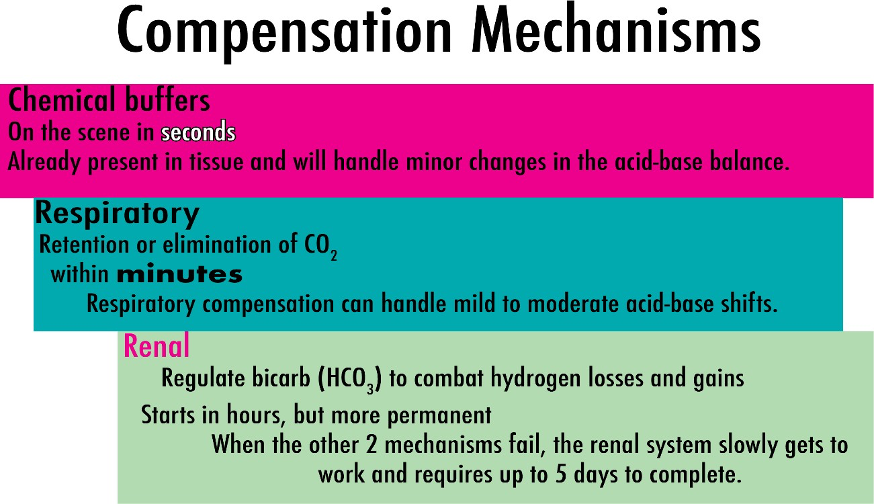A 14-year-old male seems to be always eating, although his weight is appropriate for his height. The parents ask the nurse if they should be concerned about this behaviour. Which response by the nurse is best?
His caloric intake would have to be excessive for him to gain weight.
He is substituting food for unfilled needs.
This is normal because of increase in body mass during this time.
This is abnormal and suggestive of possible future obesity.
The Correct Answer is A
The scenario describes a 14-year-old male who seems to be always eating, but his weight is appropriate for his height. In this case, it is important to reassure the parents that the behaviour may not necessarily be a cause for concern.
Option A provides an accurate response by explaining that for weight gain to occur, the individual would need to consume an excessive number of calories. Since the adolescent's weight is appropriate for his height, it suggests that his caloric intake is likely balanced and not excessive.
suggesting that he is substituting food for unfilled needs in (option B) is incorrect because it, is speculative and may not be accurate without further assessment or evidence. It is important to avoid making assumptions about underlying psychological or emotional reasons for increased eating without more information.
stating that this is normal due to an increase in body mass during this time in (option C) is incorrect because it, is not necessarily applicable to the scenario. While it is true that adolescents experience growth and changes in body composition during this period, it does not directly explain the constant eating behaviour described.
suggesting that this behaviour is abnormal and indicative of possible future obesity in (option D) is incorrect because it, may be premature and unsupported based solely on the information provided. It is essential to avoid making predictions or assumptions about future health outcomes without proper evaluation.
By providing the parents with information about the caloric intake required for weight gain and reassuring them that their son's eating behaviour may be within a normal range, the nurse can address their concerns and provide accurate guidance. If the parents have further concerned or questions, it may be appropriate to refer them to a healthcare provider for a more comprehensive assessment.
Nursing Test Bank
Naxlex Comprehensive Predictor Exams
Related Questions
Correct Answer is B
Explanation
The regulation of acid-base balance in the body involves multiple systems working together. The respiratory system, renal system, and chemical-buffering systems play key roles in maintaining the balance of acids and bases in the body.
The respiratory system helps regulate acid-base balance through the control of carbon dioxide (CO2) levels in the blood. By adjusting the rate and depth of breathing, the respiratory system can increase or decrease the elimination of CO2, which affects the pH of the blood.
The renal system (kidneys) plays a crucial role in regulating acid-base balance by controlling the excretion and reabsorption of hydrogen ions (H+) and bicarbonate ions (HCO3-) in the urine. The kidneys can excrete excess acids or bases to help maintain the body's pH within a normal range.
The chemical-buffering systems involve various chemical compounds in the body that can absorb or release hydrogen ions to help maintain pH balance. Examples of chemical buffers include bicarbonate ions (HCO3-), phosphate ions (HPO4-), and proteins.
the cardiovascular and integumentary systemin (option A) is incorrect because they, are not primarily responsible for regulating acid-base balance in the body.

Correct Answer is D
Explanation
In this scenario, the child's increased urination after a serious motor vehicle crash may
indicate a potential issue with fluid balance. Monitoring the child's intake and output is the
priority action for the nurse. This involves accurately measuring and recording the fluids the
child consumes (intake) and the fluids the child eliminates through urine, sweat, and other
sources (output). By closely monitoring the child's intake and output, the nurse can assess the
child's fluid status and identify any abnormalities or imbalances that may require further
intervention.
Restrict dietary sodium intake in (option A) is incorrect because restricting dietary sodium
intake, may be necessary in certain situations, such as if the child has a known sodium
imbalance or hypertension. However, it is not the priority action in this scenario.
Assess the daily serum sodium level in (option B) is incorrect because assessing the daily
serum sodium level, is important to evaluate the child's electrolyte balance. However, it is not
the priority action compared to monitoring the child's intake and output.
Weigh the child daily in (option C) is incorrect because weighing the child daily, is a useful
measure to assess changes in fluid balance. However, it is not the priority action in this
scenario compared to monitoring the child's intake and output, which provides real-time
information on fluid balance.
Whether you are a student looking to ace your exams or a practicing nurse seeking to enhance your expertise , our nursing education contents will empower you with the confidence and competence to make a difference in the lives of patients and become a respected leader in the healthcare field.
Visit Naxlex, invest in your future and unlock endless possibilities with our unparalleled nursing education contents today
Report Wrong Answer on the Current Question
Do you disagree with the answer? If yes, what is your expected answer? Explain.
Kindly be descriptive with the issue you are facing.
